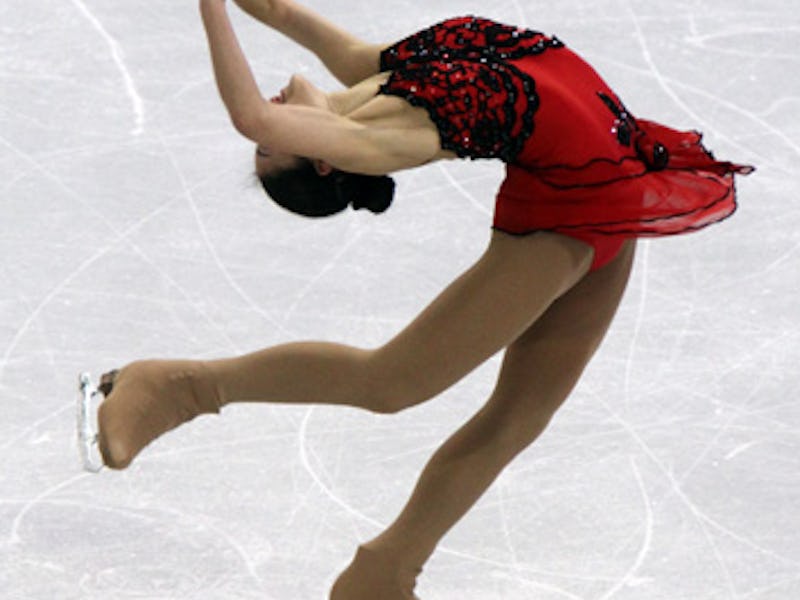How Mirai Nagasu's Epic Olympic Triple Axel Is a Triumph of Physics
She's the first American woman to pull it off at the Olympics.

Mirai Nagasu made history Sunday night as the first American woman to ever land a triple axel at the Pyeongchang Winter Olympics. Skating to the soundtrack from Miss Saigon on Sunday, Nagasu’s completion of the most difficult move in women’s figure skating earned her a nearly perfect score of 137.53 points and helped the United States win bronze in the figure skating team competition.
The high-risk jump is so difficult because it requires mastering the physics of hurling your body into the air, rotating it three and a half times, and landing on the ice with grace. Success is largely dependent on skill and technique, but biological constraints are thought to make it more difficult for female competitors to pull it off than male athletes.
To begin an axel, a skater starts skating backwards, steps forward on the outer edge of one skate, then jumps into the air. A single axel is a required element in any professional women’s skating routine, and most competitors perform a double. But it’s the elusive triple axel that is the most difficult and earns the most points. In this jump, skaters have to rotate three and a half times in the air within less than a second.
Landing the jump is, arguably, the hardest part. The rapid revolutions of a triple axel cause the skater to land with a force more than four times their body weight, CNN points out. This means Nagasu, at 125 pounds, feels the impact of 500 pounds of force when she lands a triple axel — and all of that force concentrates on a blade that’s only a quarter-inch thick. Weight is such a crucial factor in these jumps that Nagasu’s costume designer takes into account how heavy the glue is that she uses on her dresses.
To get the speed it takes for the rotational twirl, skaters can’t just rely on their momentum going into the jump. Once the rotations begin, they pull their arms and legs in tightly, crossing their ankles and holding their elbows. In The Conversation, sport sciences professor Deborah King, Ph.D., explains that this pencil-like body formation minimizes the resistance the skater creates in the air. The tighter the skater’s body is, the faster they can rotate.
“Skaters must use their muscles to create centripetal force, which pulls objects towards the axis of rotation, keeping them on a circular path,” King writes. “If they relax, their arms and feet will want to keep moving straight and will get flung outward.”
Illustration of a single axel.
To prepare for her Olympic triple axel, Nagasu — who is also only the third American woman to land the jump on U.S. soil — practiced, in part, with an off-ice apparatus called the Champion Skating Harness. A contraption of ropes and a harness, the training tool helps skaters experience what it’s like to pull in and tighten their bodies to the extent necessary to master the multiple rotations. In this video produced by The Players’ Tribune, Nagasu explains that “the faster you spin, the harder it is to breathe because there is so much force, and you have to stay controlled.”
While it’s rare in women’s figure skating, the triple axel is relatively common in the performances of male figure skaters. Experts think the reason for this is biological: It’s simply more work for women to achieve the power-to-weight ratio needed to complete the jump because they are not as heavy. While the changes that come with puberty often throw off female skaters, it only makes male skaters stronger.
That’s what makes Nagasu’s triumph even more spectacular: She had to work extremely hard to have the strength and stamina to pull off the extra half rotation it takes to perform a triple axel.
“It’s not a jump that the others can do, so I take pride in that,” Nagasu explained in a pre-Olympics interview about completing the move in other competitions. “I’m super proud that I’m going down in history.”